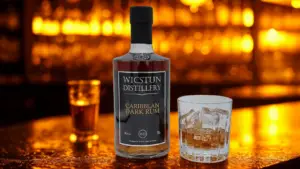In the heart of Dufftown, Speyside, Scotland’s whisky capital, a bold experiment in 2016 reshaped how single malt Scotch could be imagined. The family-owned Glenfiddich Distillery, one of the world’s most recognized whisky producers, launched its Experimental Series. At its center was the world’s first single malt finished in India Pale Ale (IPA) craft beer casks, a release that challenged convention while honoring tradition.
The Vision of Brian Kinsman
The Experimental Series was conceived by Brian Kinsman, Glenfiddich’s master blender since 2009, who had succeeded the legendary David Stewart after years of apprenticeship. Kinsman envisioned collaborations outside the whisky world that could bring fresh flavors while preserving authenticity. His first release, unveiled in September 2016, was the IPA Experiment, a whisky unlike any Glenfiddich had produced before.
Collaboration with Craft Beer
To make the idea real, Kinsman partnered with Seb Jones, a Speyside craft brewer. Together, they developed a custom IPA brewed with extra hops and citrus-forward flavors designed specifically to season American oak casks. Once the beer had matured and was emptied, Glenfiddich filled the barrels with single malt. The result was a whisky with orchard fruit sweetness layered with zesty hops, green herbs, and a subtle bitterness—a profile unprecedented in Scotch.
A Series of Firsts
Later in 2016, the IPA Experiment was joined by another innovative release, Project XX, created in collaboration with 20 Glenfiddich brand ambassadors worldwide, each choosing a cask that Kinsman blended into a singular expression. Together, these bottlings showed Glenfiddich as both a guardian of heritage and a pioneer willing to push boundaries.
Redefining Cask Finishing
Finishing Scotch in fortified wine casks such as sherry or port had been standard since the 1980s, but beer cask finishing was a first. The IPA Experiment sparked lively debate across the whisky world. Purists questioned whether beer belonged in Scotch-making, but many younger consumers and bartenders welcomed the release as a bridge between whisky and craft beer cultures, expanding Scotch’s appeal to new audiences.
Reception and Recognition
The IPA Experiment quickly gained momentum. Critics praised its originality, while consumers in the United States and Europe, already immersed in a craft beer renaissance, embraced it enthusiastically. By connecting whisky to the familiar language of hops and brewing, Glenfiddich reached a new generation of drinkers, many of whom may not have otherwise engaged with single malt.
Beyond the IPA
The Experimental Series continued with releases such as Fire & Cane (a smoky whisky finished in rum casks), Winter Storm (finished in Canadian ice wine casks), and further iterations of Project XX. Each release demonstrated Glenfiddich’s confidence in pushing boundaries, but the IPA Experiment remains the most symbolic, remembered as the whisky that proved Scotch could evolve without abandoning its roots.
Legacy and Meaning
For the Barlist community, Glenfiddich’s Experimental Series is more than a collection of unusual bottlings. It is a lesson in how tradition and creativity can coexist. By daring to finish single malt in IPA casks, Glenfiddich reminded the whisky world that experimentation does not weaken heritage, it enriches it. In every glass of the IPA Experiment is whisky, but also a bold vision of what Scotch can become in the 21st century.


